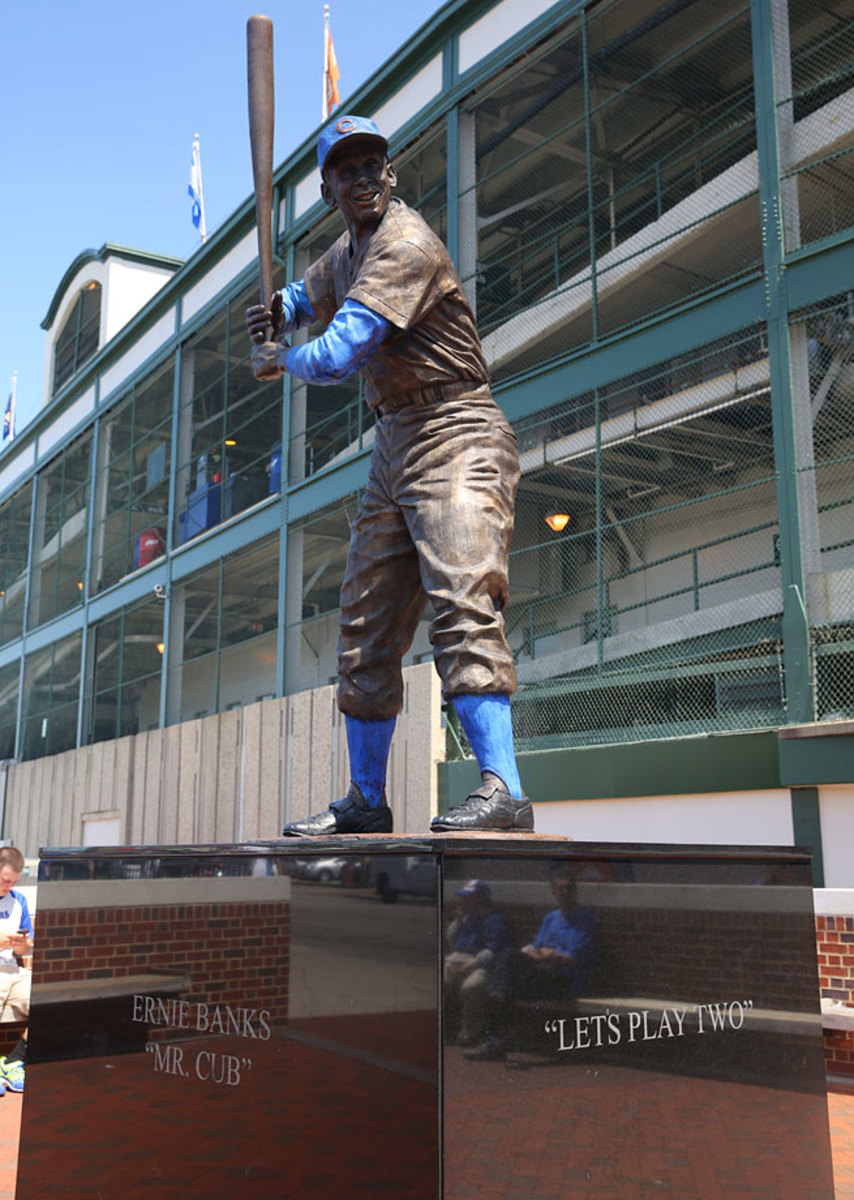Remembering Ernie Banks: Why 'Mr. Cub' was the ideal baseball hero

A man would grow old, wrecked by madness or more by shame, trying to find just one posed photograph of Ernie Banks when he was not smiling, or just one recorded complaint from the man, or just one negative word about him from anyone with a shred of human decency. Ernie Banks, the great symbol not only of Chicago Cubs baseball but also of a Major League Baseball ideal, really was that kind and that joyful.
In 1969, when Banks was two years from the finish line to his 19-year career, a Chicago Cubs teammate told Sports Illustrated writer Mark Kram what would happen when Banks passed on.
“When Ernie dies, and the undertaker is finished, he’ll rise up and say, ‘Nice job, buddy.’”
Banks died Friday, eight days before his 84th birthday. No word yet from the undertaker on acts of kindness from the beyond.
Banks played his entire Hall of Fame career, 2,528 games from 1953 through '71, with one team, the Cubs. Only three men ever hit more than his 512 home runs while playing in one place: Mike Schmidt, Mickey Mantle and Ted Williams. Banks never left and he never disappointed, becoming, quite literally, the definition of a franchise player: Mr. Cub.
• MORE: World remembers Ernie Banks
Where Are They Now: Catching up with Cubs legend Ernie Banks
Line up the greatest all-time marriages between a city and an athlete and if you look closely enough you will find many of them strained beneath the surface, even just a bit, by the star’s ego, distance, moodiness, entitlement, or some such flaw of personality that exists on the slip side to physical genius. None of the great such love affairs were purer than the one between Chicago and Banks. You need not have qualified your devotion to him. He was a man of and for the people, not some baseball god visiting from Olympus. How fitting that Banks played his entire home career in daylight and endorsed cookies made by a company called Sunshine. The guy was a walking dose of vitamin D.
“Welcome to the friendly confines of Wrigley Field,” Banks would gush during batting practice. “Oh, oh, it’s great to be alive and a Cub on this beautiful sun-kissed afternoon.”
And then he might add, in his signature pronouncement, “Let’s play two!” The phrase became and remains embedded not just in baseball culture but also in Americana. It’s how an American defines the boundless optimism, the joy of the moment at hand.
The full, amazing wattage of Banks’ spirit is not that he said it all … the … time, but that he meant it all the time.
Kram wrote, “By just being, he is the greatest promoter baseball has ever had,” then quoted the long time baseball executive Frank Lane saying, “He’s a hundred billboards on a hundred highways. He’s priceless as advertising.”
Banks was born in Dallas in 1931, one of 12 children. His father picked cotton before becoming a store clerk. Banks signed out of high school to play for the Kansas City Monarchs of the Negro Leagues, then was signed by the Cubs for $35,000 in 1953. That year, six years after Jackie Robinson debuted for the Brooklyn Dodgers, Banks became the Cubs' first African-American player.
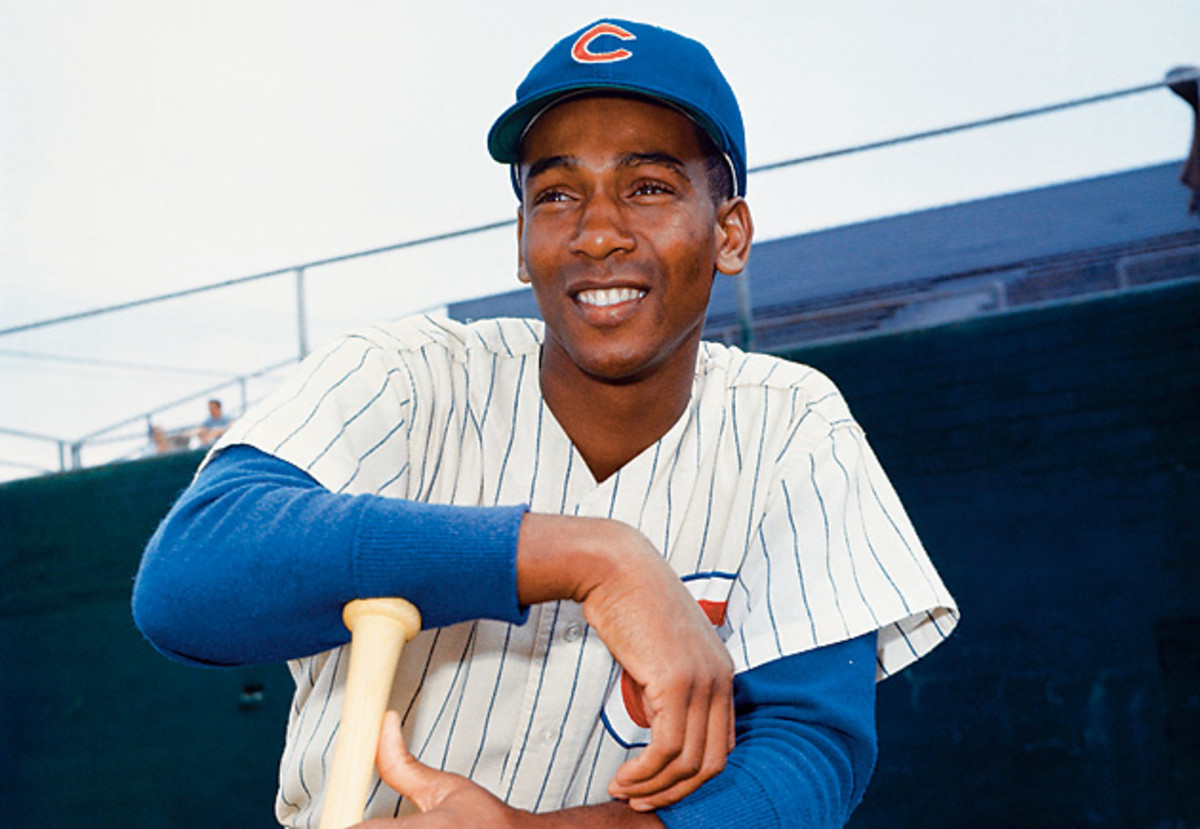
An All-Star at shortstop and then at first base, Banks showed tremendous power for a man who stood 6-foot-1 and weighed 180 pounds. He was blessed with extraordinary eyesight (20/13) and strong, supple wrists. Using a 31-ounce bat – considered very light for the time – Banks flicked baseballs into the Wrigley bleachers more than he overpowered them. He hit more than 40 home runs five times – the only infielders ever to do so more times are steroid users Mark McGwire and Alex Rodriguez – drove in 100 runs eight times, and won back-to-back MVP Awards (1958 and '59) while playing for losing teams.
Banks was famously acquainted with losing. His 2,528 games without reaching the postseason remain a major league record, 106 more than Luke Appling. His 19 Cubs teams finished at least 13 games out of first place 17 times. The only exceptions coming in 1969, when they were in first place in the newly created NL East every day of the season until Sept. 9 but finished eight games behind the streaking Miracle Mets, and in 1970, when they finished in second place, five games out.
Even without postseason attention, Banks sailed into the Hall of Fame on his first ballot in 1977. His playing statistics are impressive, but we need help in summoning them. To measure the true greatness of Banks you need not crack a binder nor click on a Web site. Hear the name “Ernie Banks,” and, even if you never saw him play or heard him laugh, you can just close your eyes and see an angular figure in the sunshine, the red “C” on his blue cap and the green ivy in the background. You will see the smile and feel the joy, and that is a legacy far bigger than 512 home runs. He became an ideal of what happens when the athletes we root for are worthy of our admiration in all manners, not just athletic ones, and that is how forever he will remain.
GALLERY: SI's RARE PHOTOS OF ERNIE BANKS
Classic SI Photos of Ernie Banks
1955
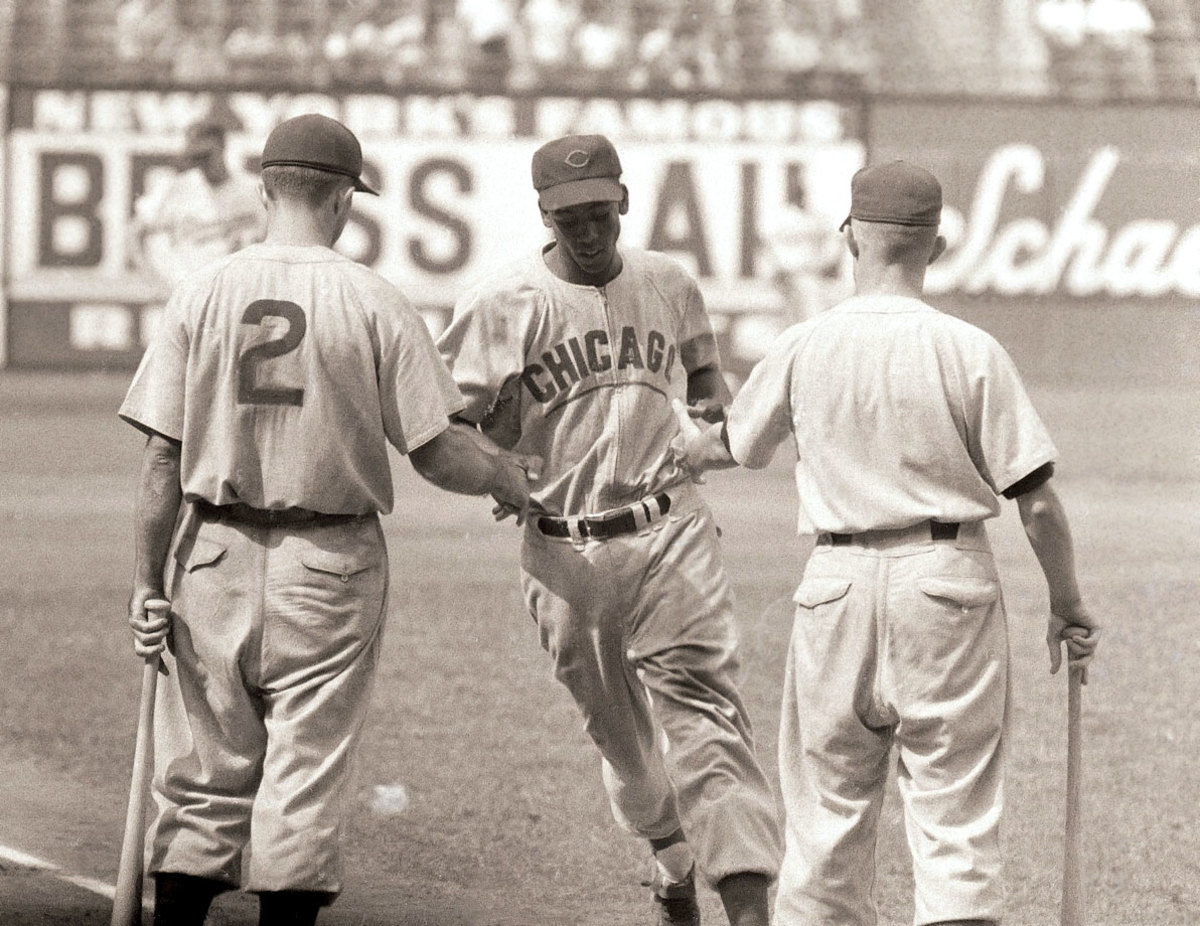
1955
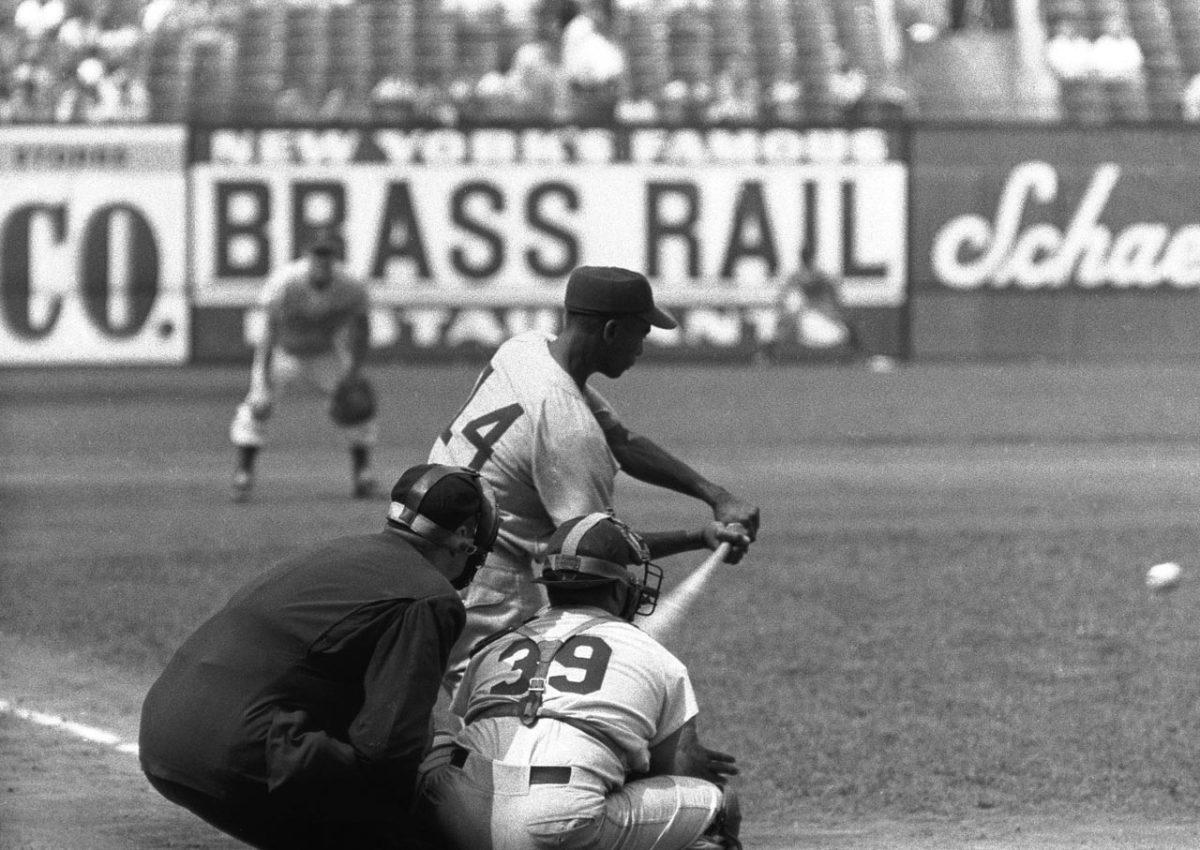
1955
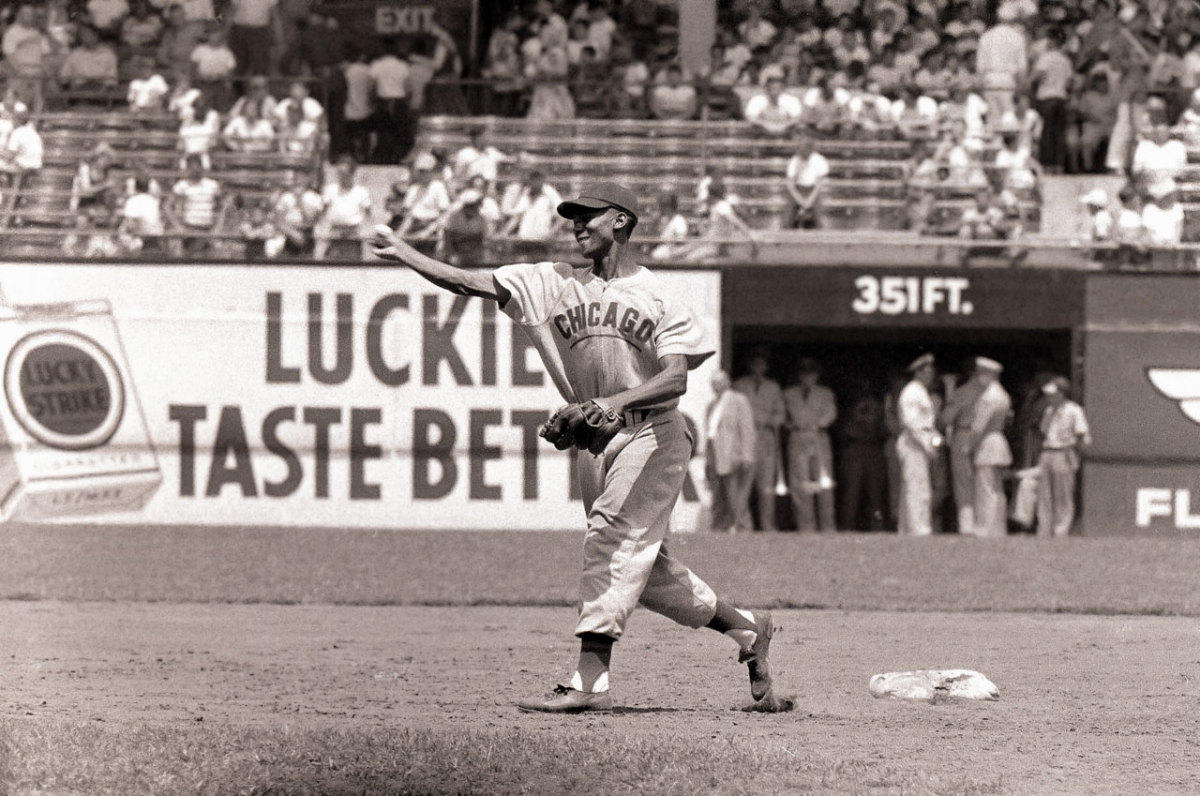
1955
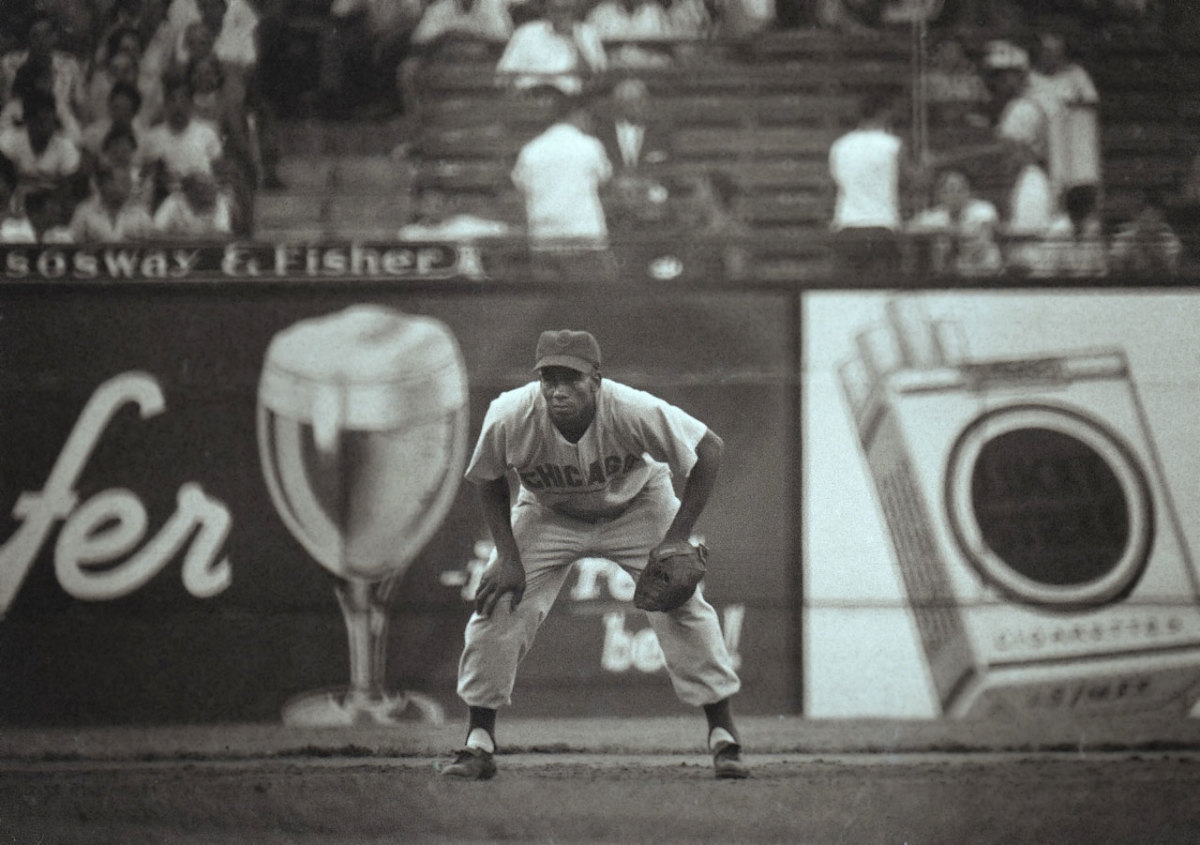
1956
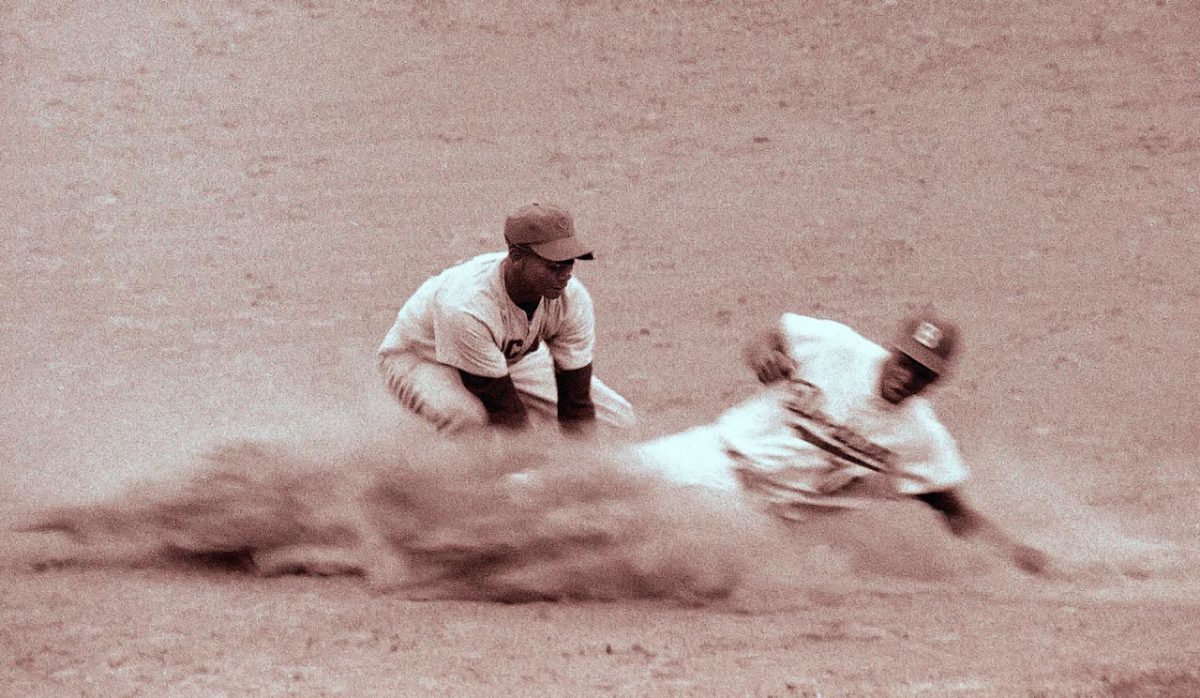
Ernie Banks makes the tag on Jim Gilliam of the Brooklyn Dodgers.
1962
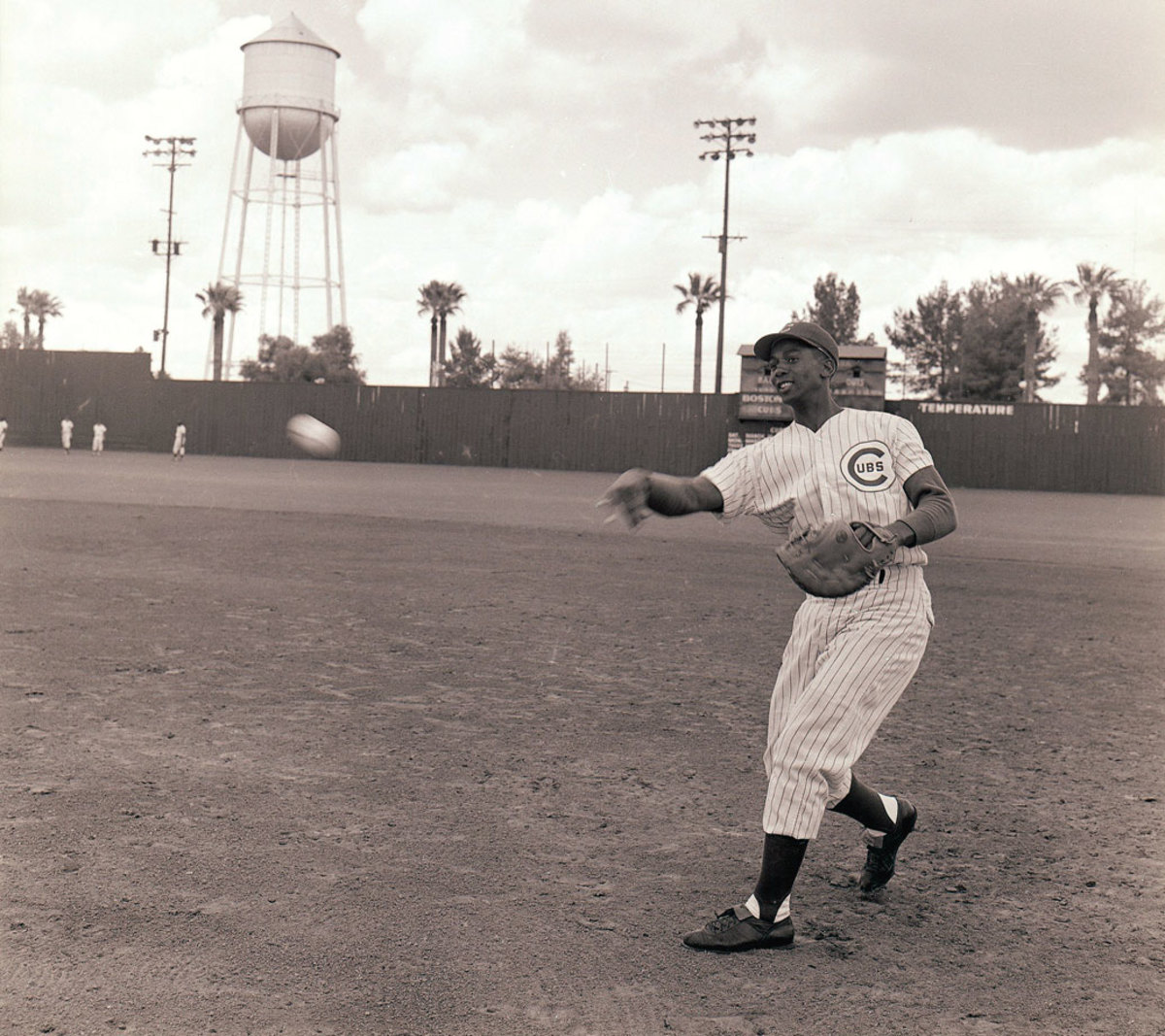
1962
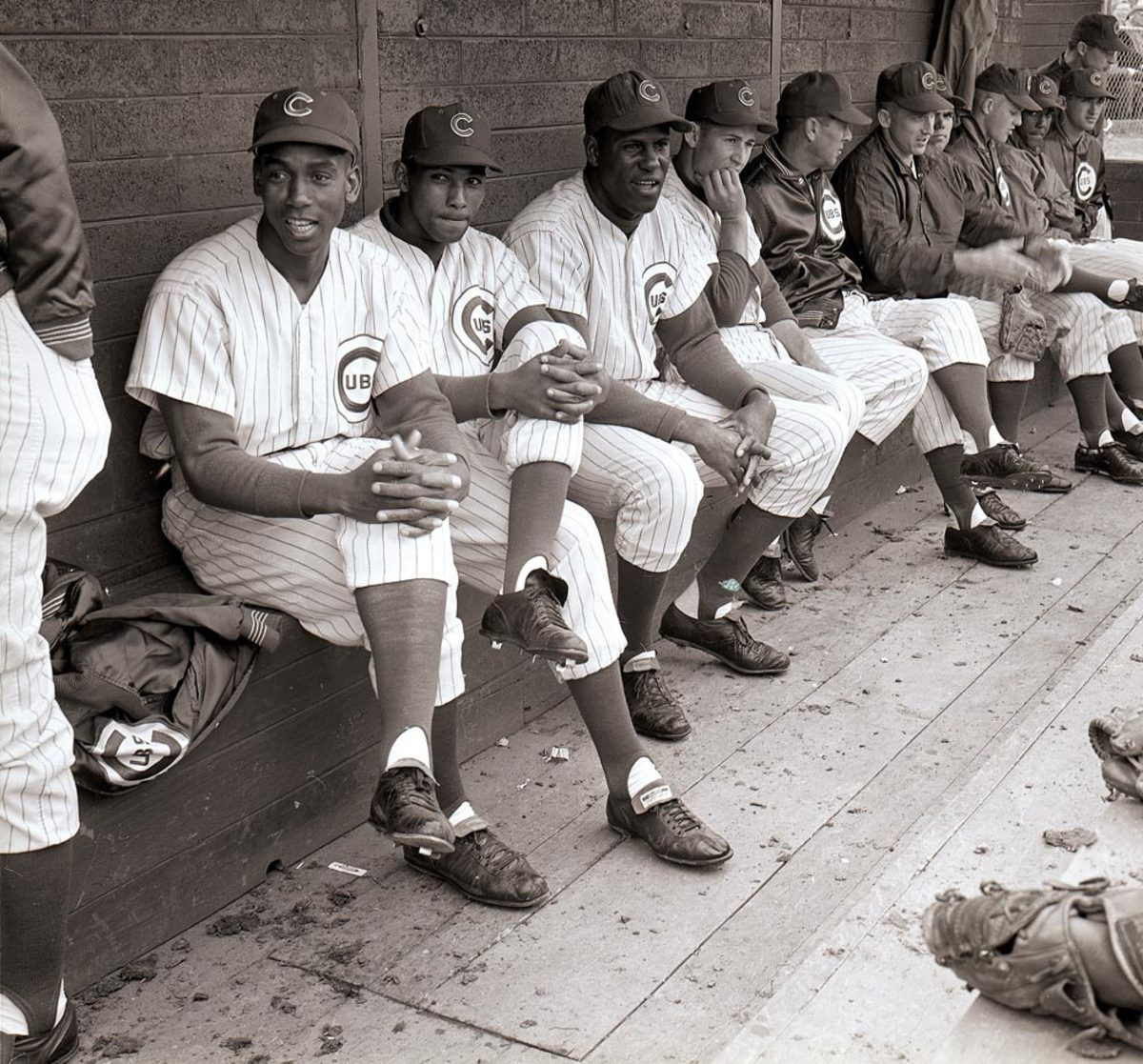
Ernie Banks sits with Billy Williams, George Altman and Ron Santo in the dugout.
1964
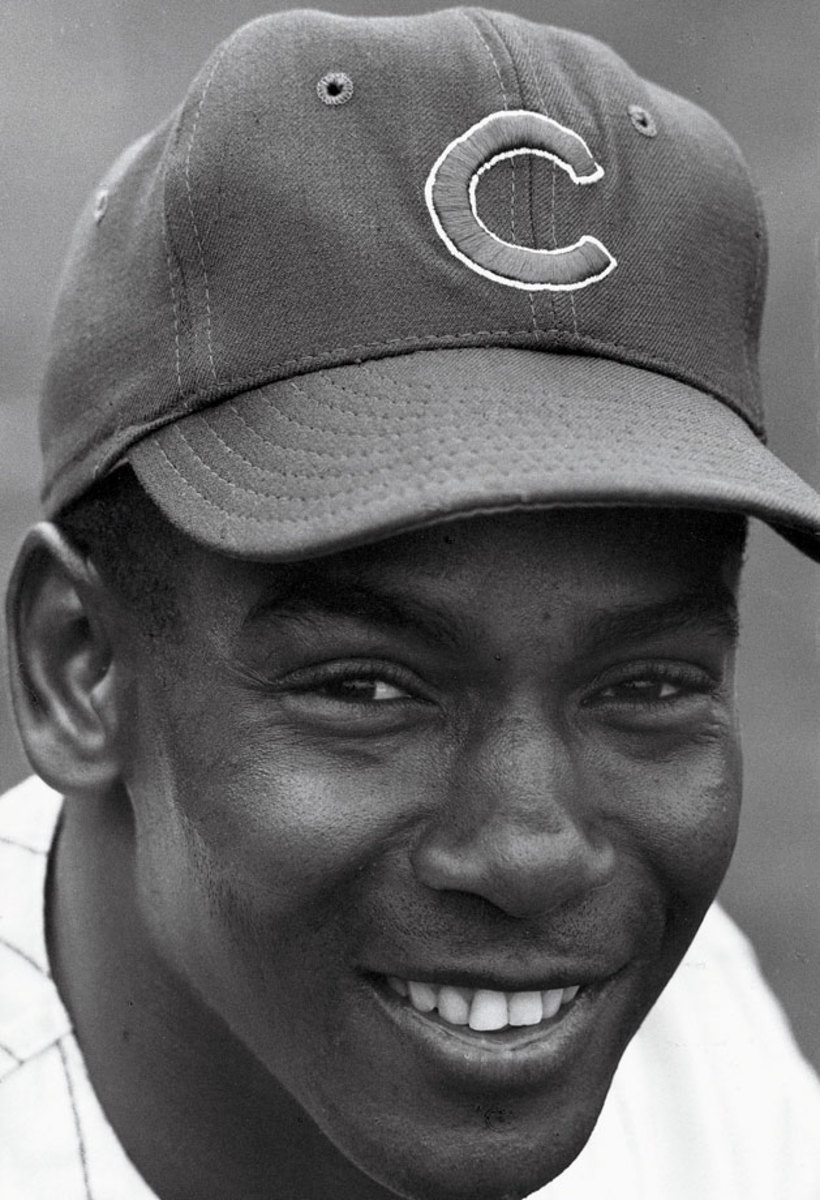
1969
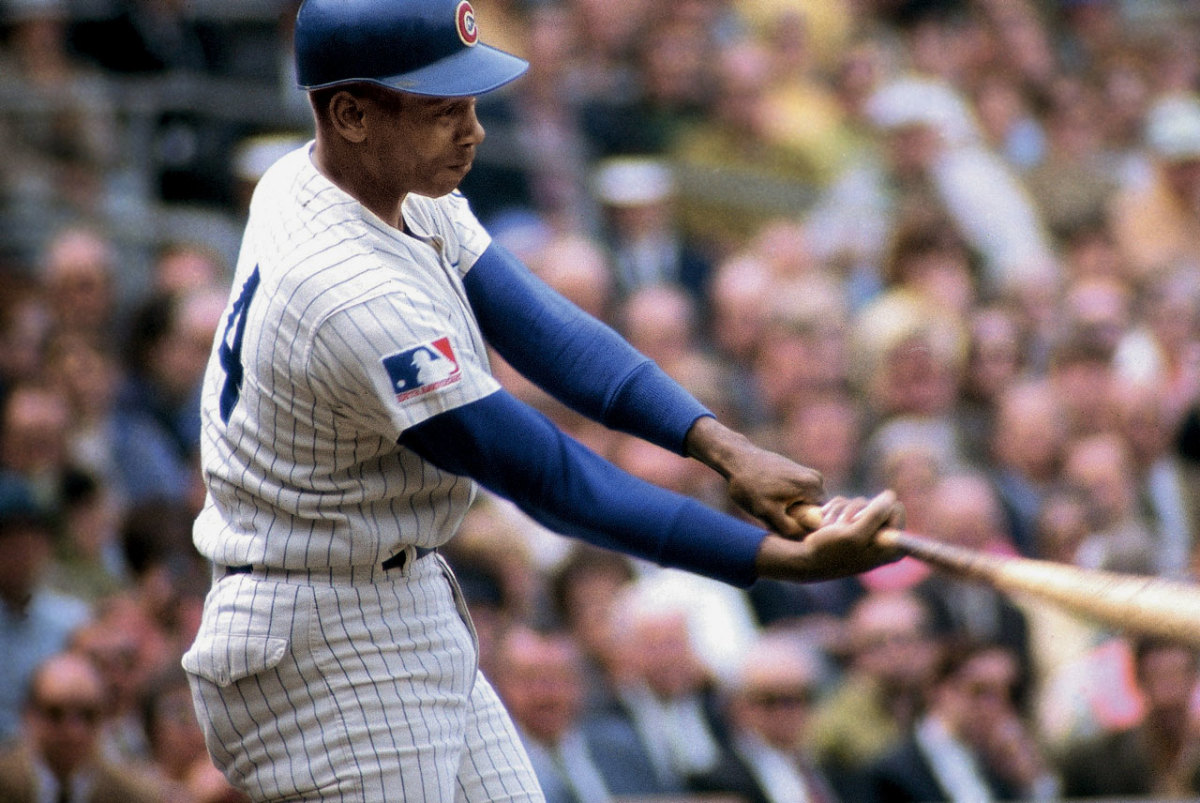
1969
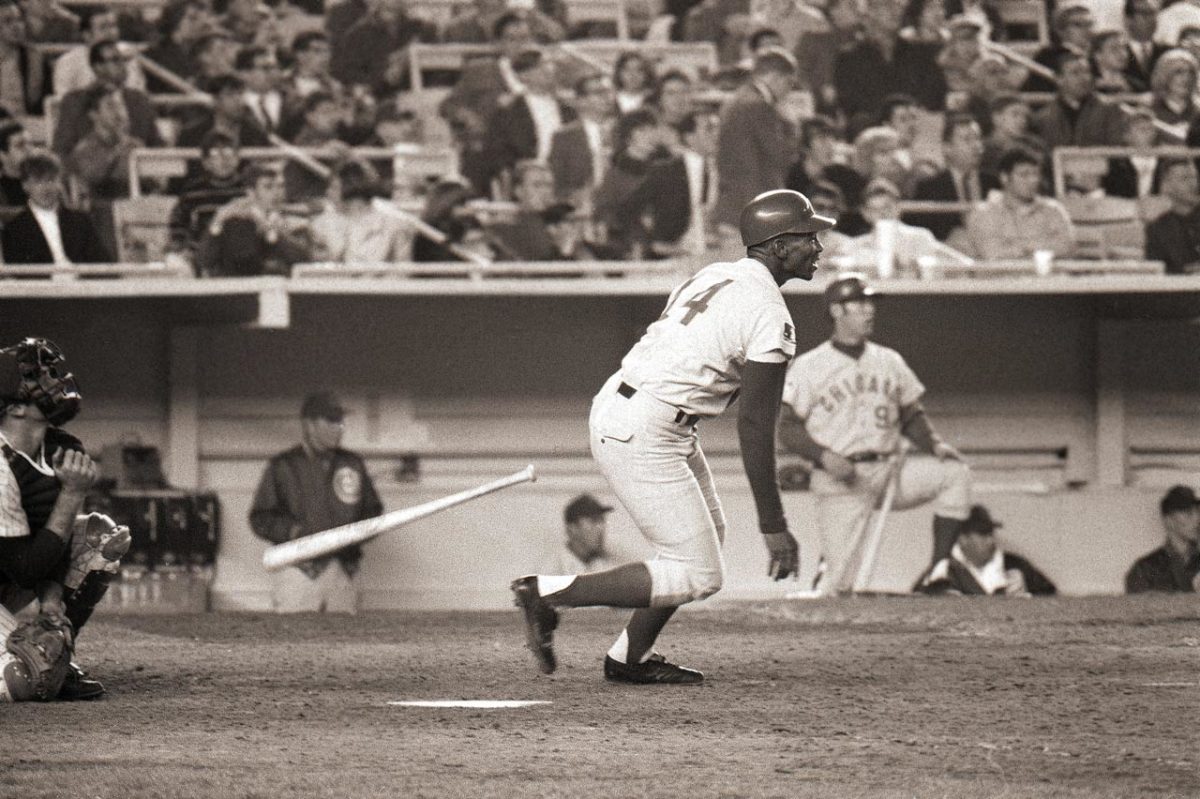
1969
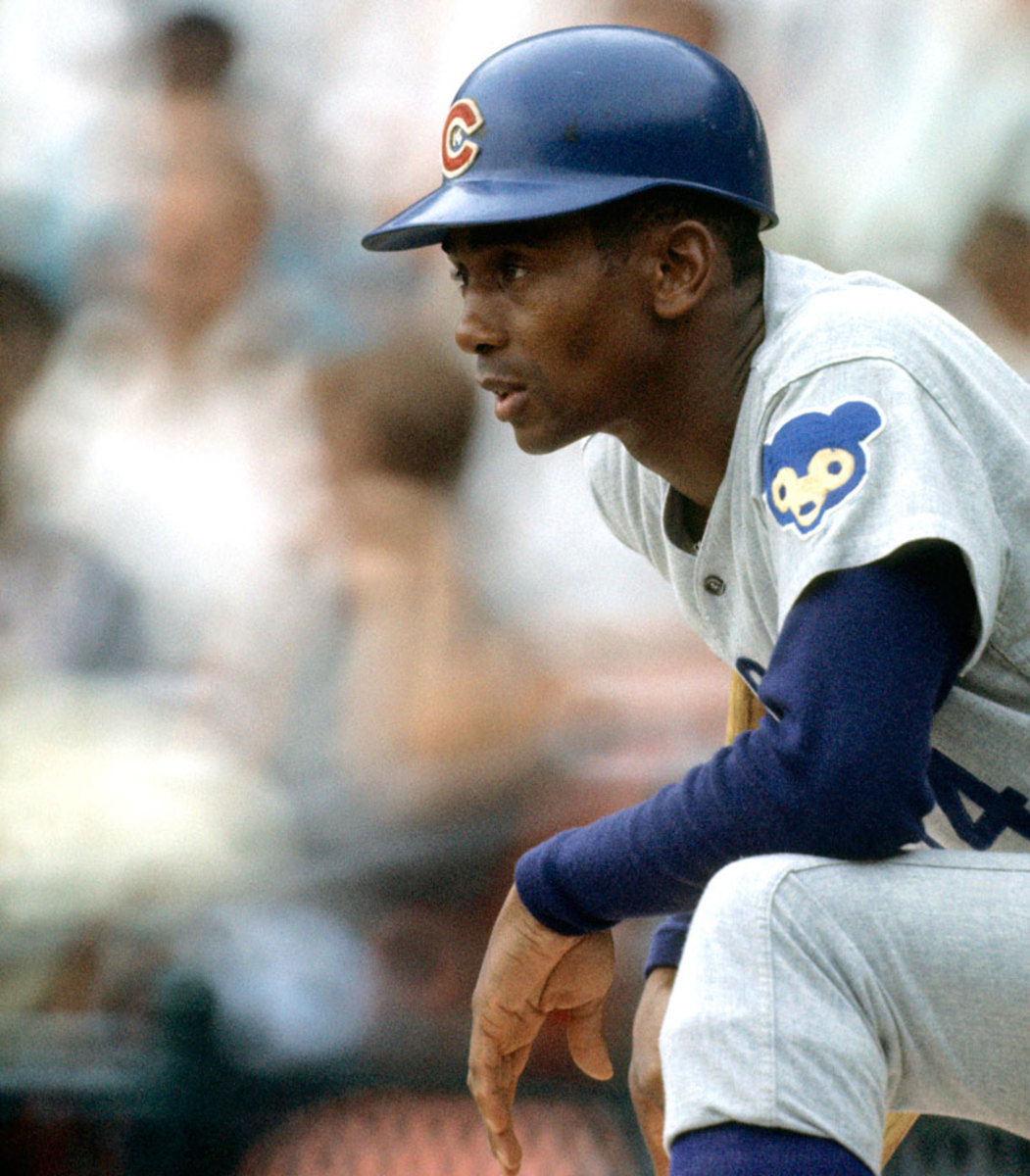
1969
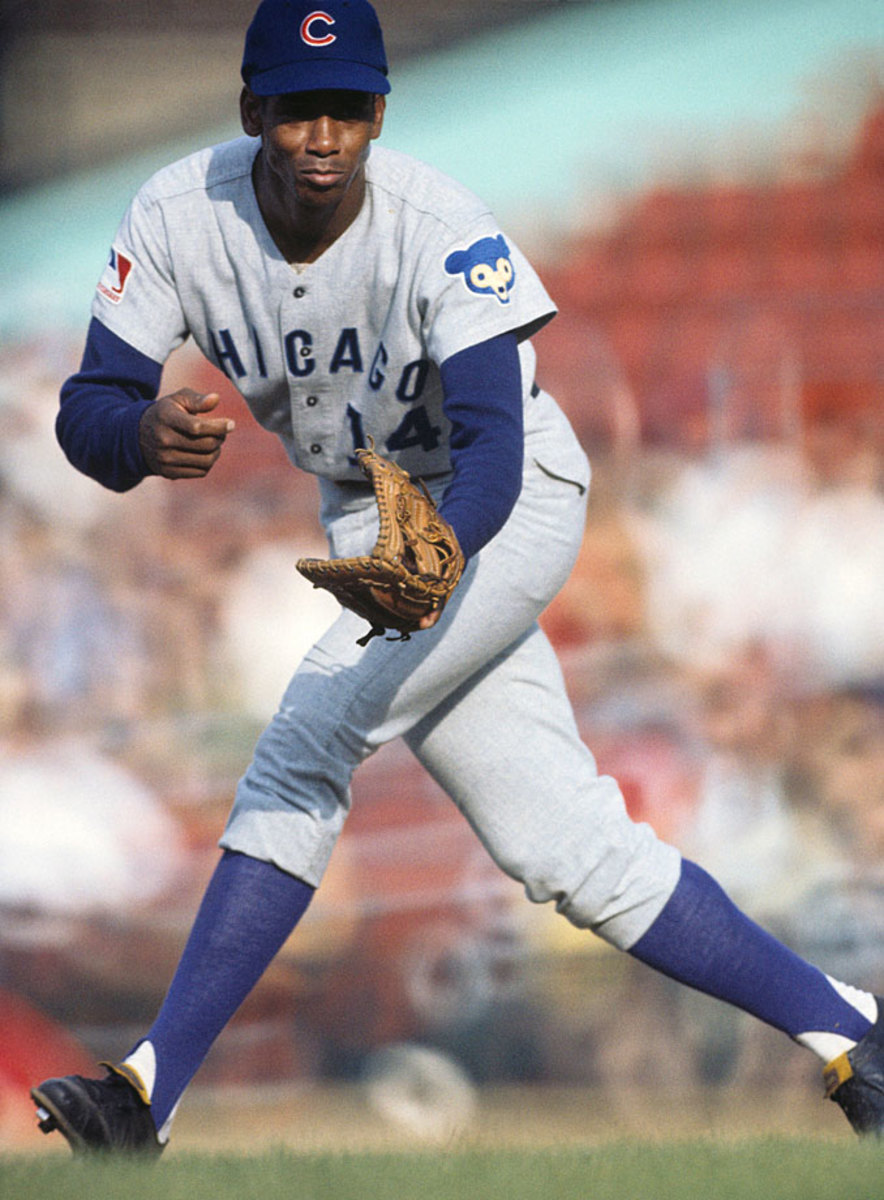
1969
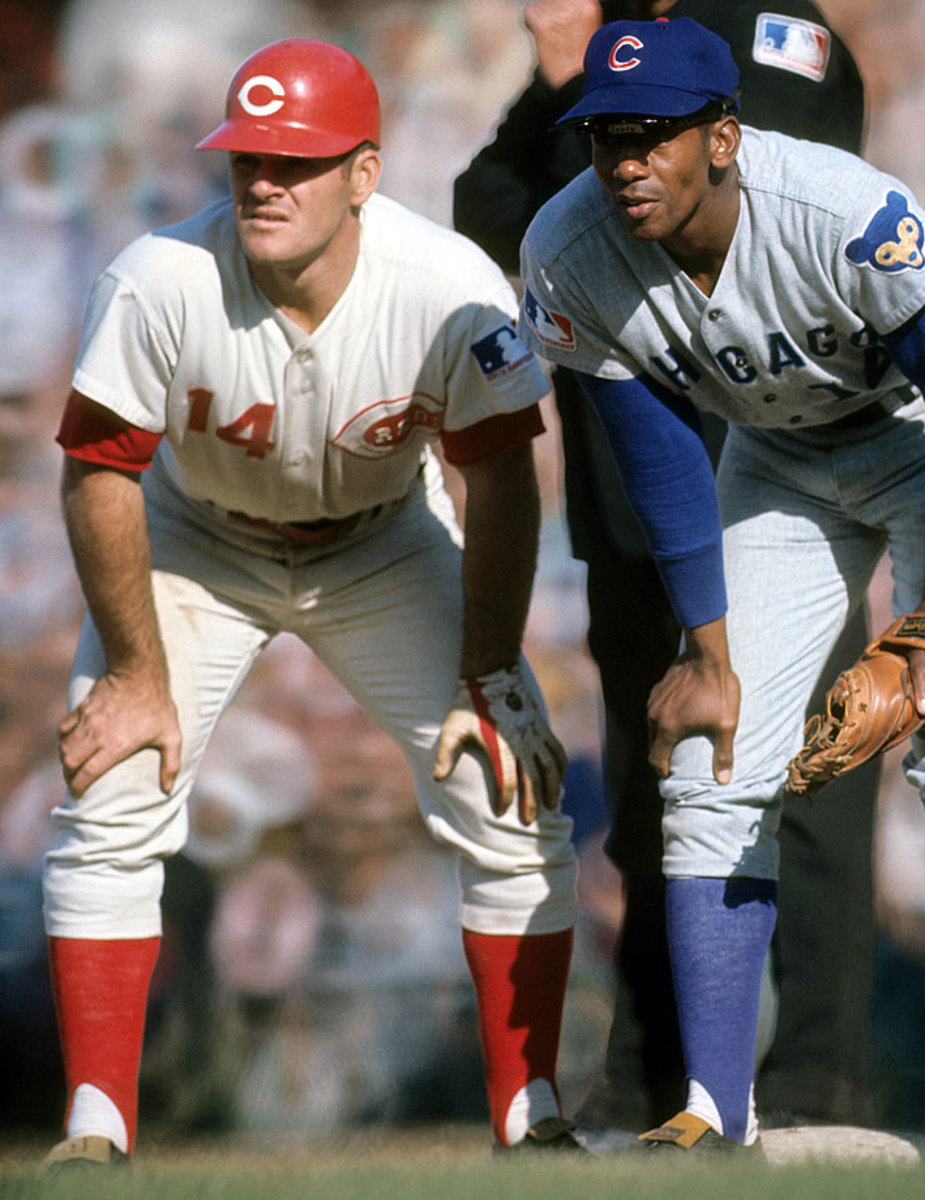
Ernie Banks and Pete Rose on first base.
1969
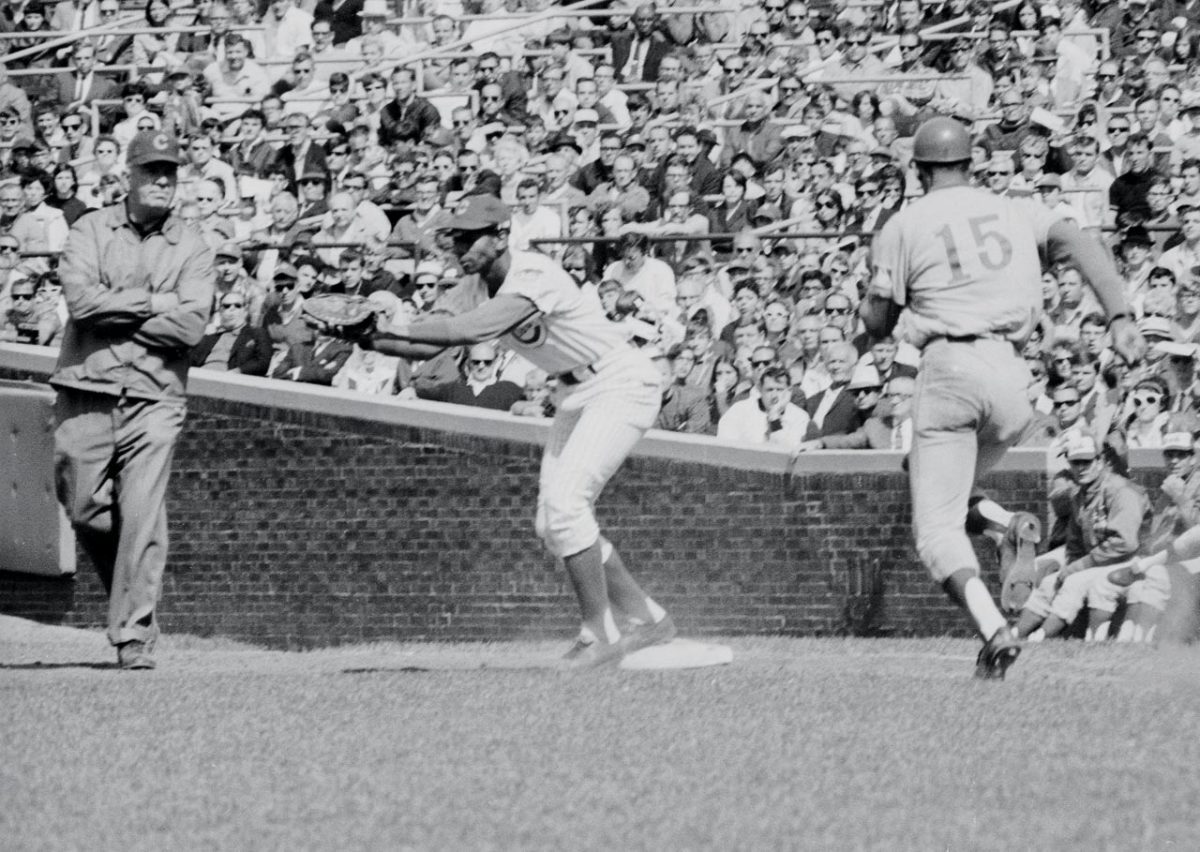
Ernie Banks catches a throw to first for an out on Manny Mota.
1969
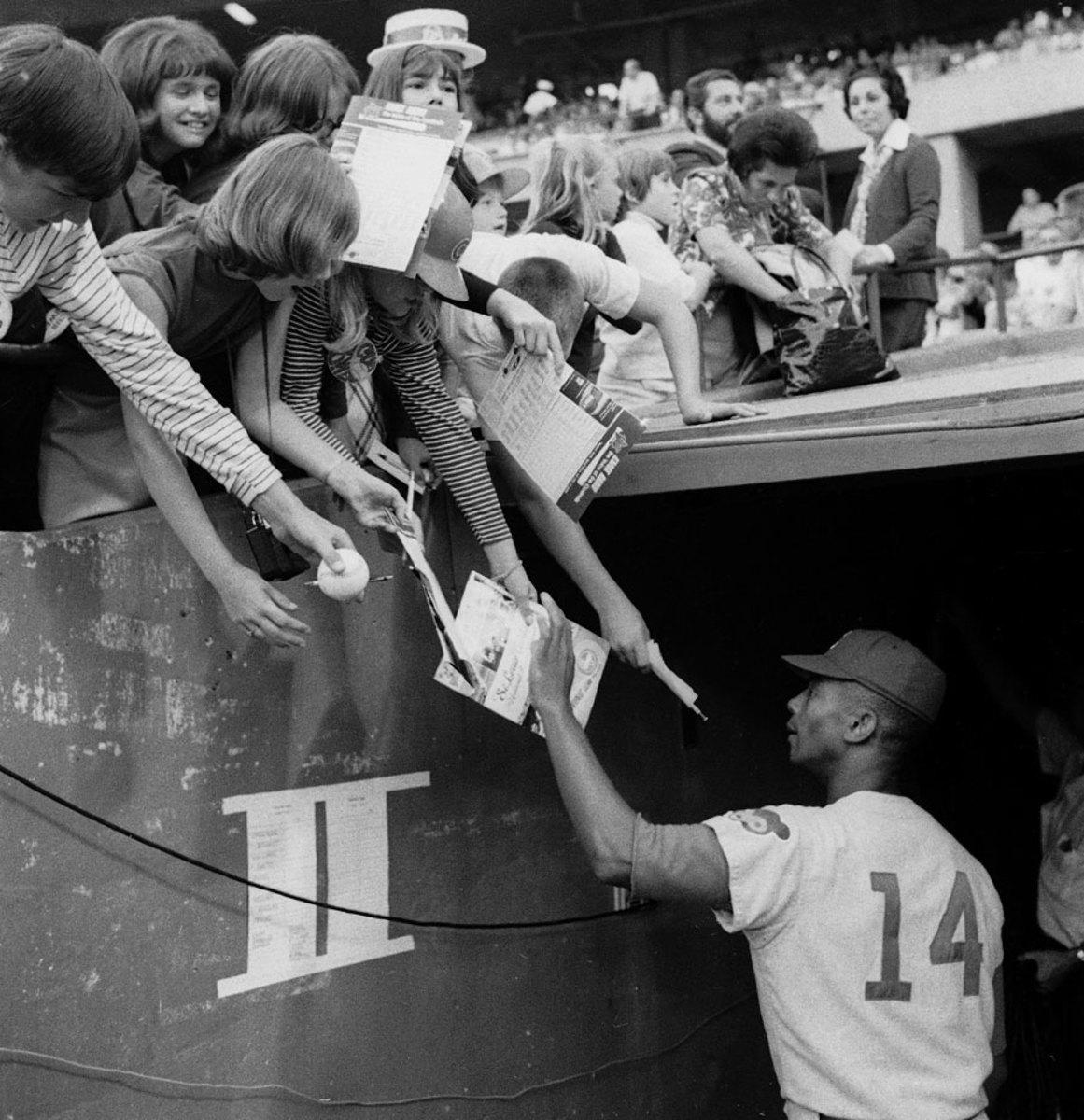
1970
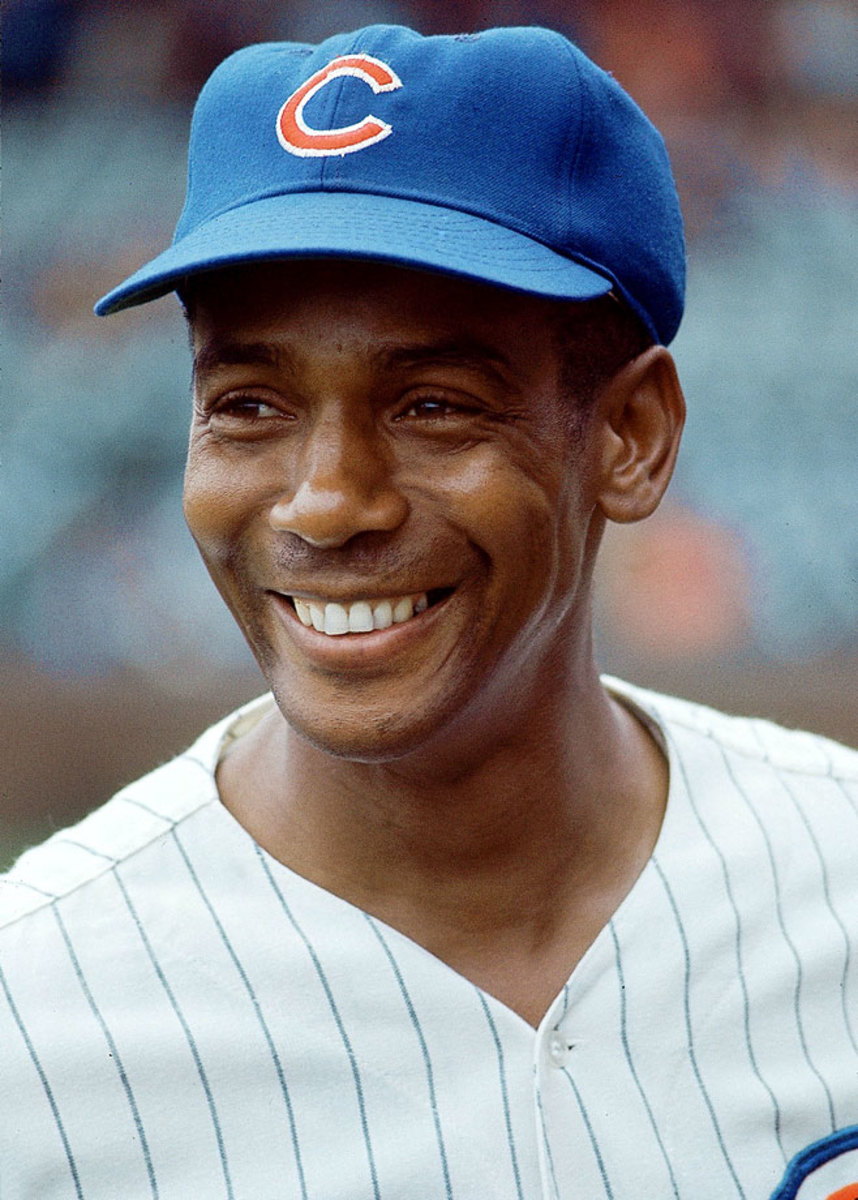
1995
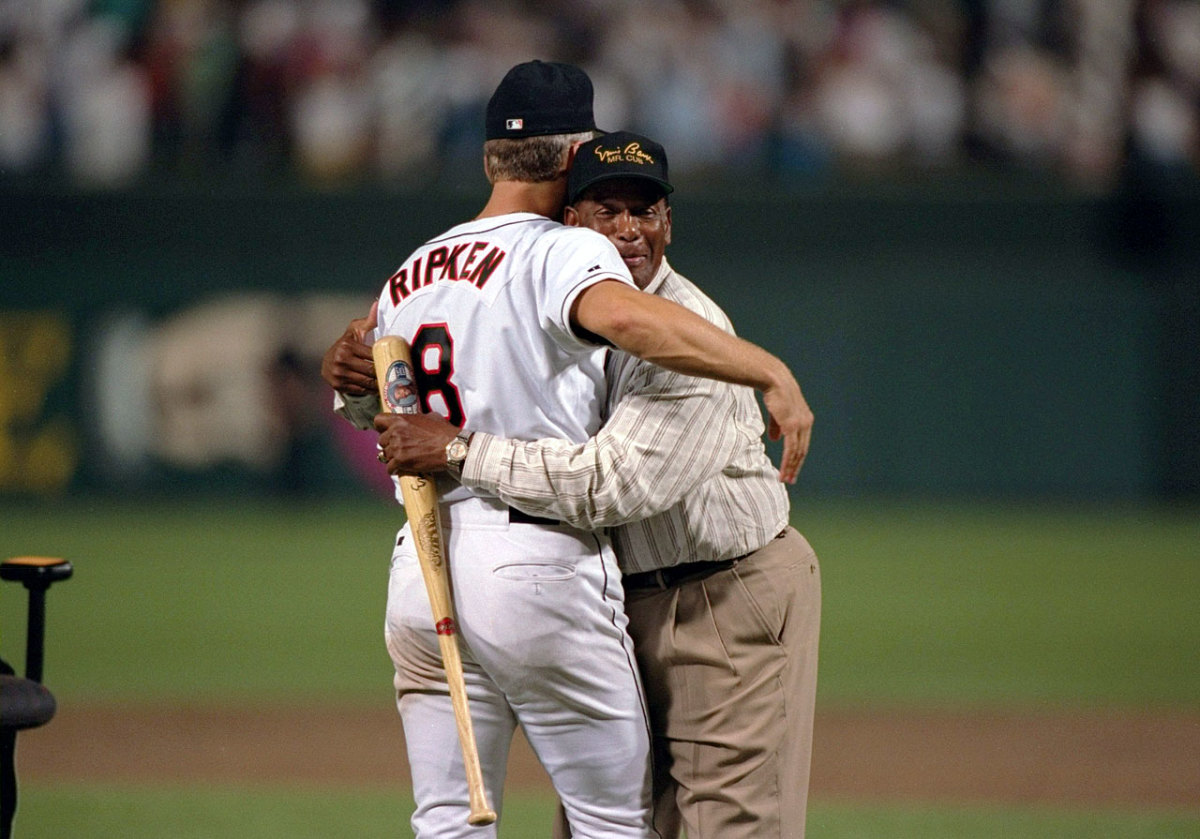
Ernie Banks hugs Cal Ripken Jr. after Ripken tied Lou Gehrig's record of 2,130 consecutive games played.
1996
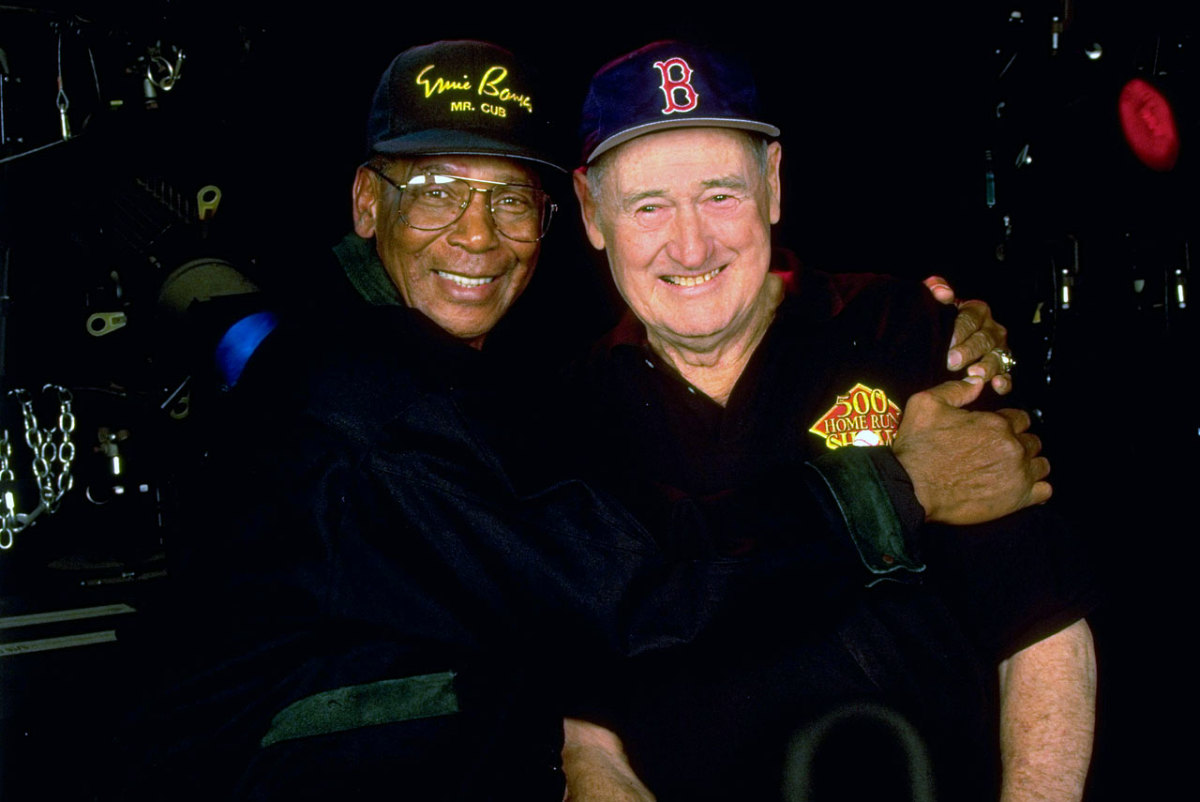
Ernie Banks hugs Ted Williams during the 500-hitters reunion.
1999 All-Star Game
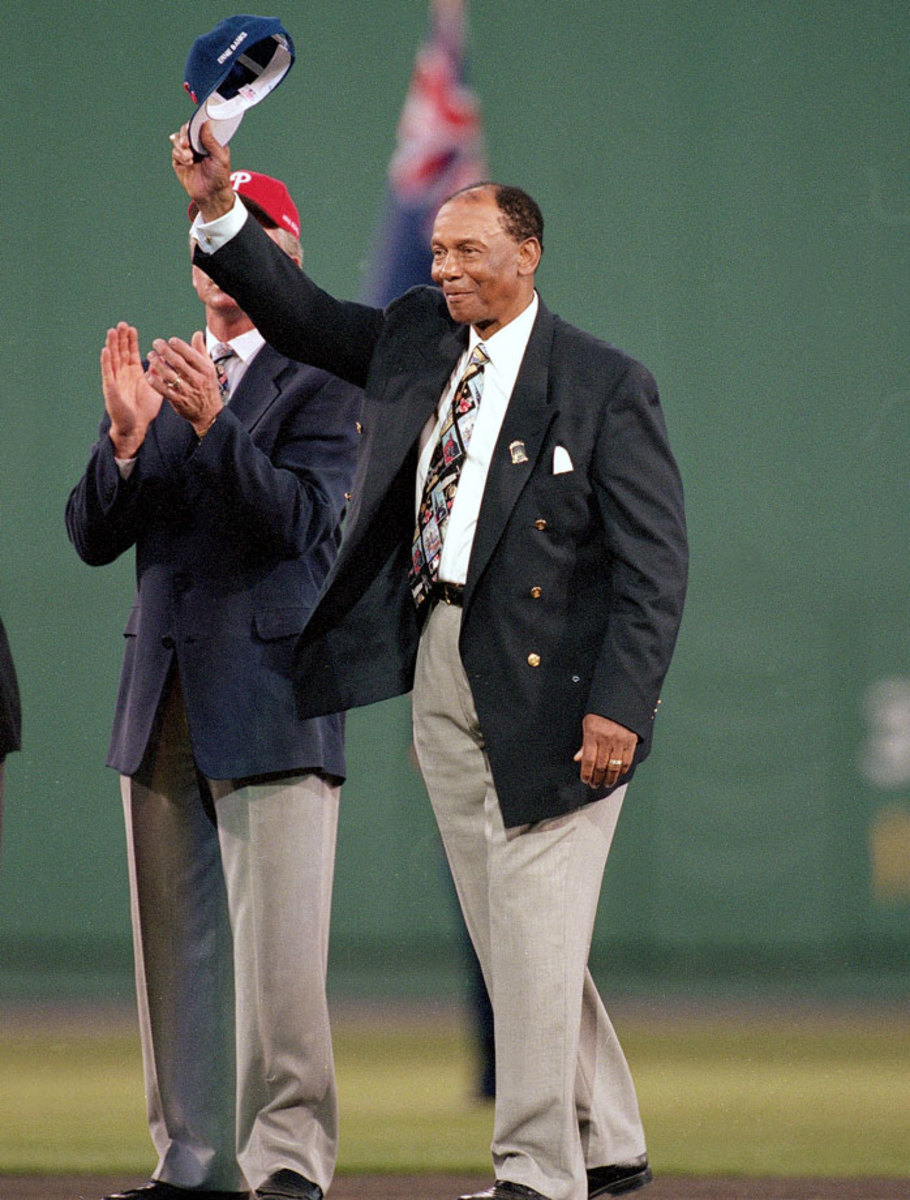
2001
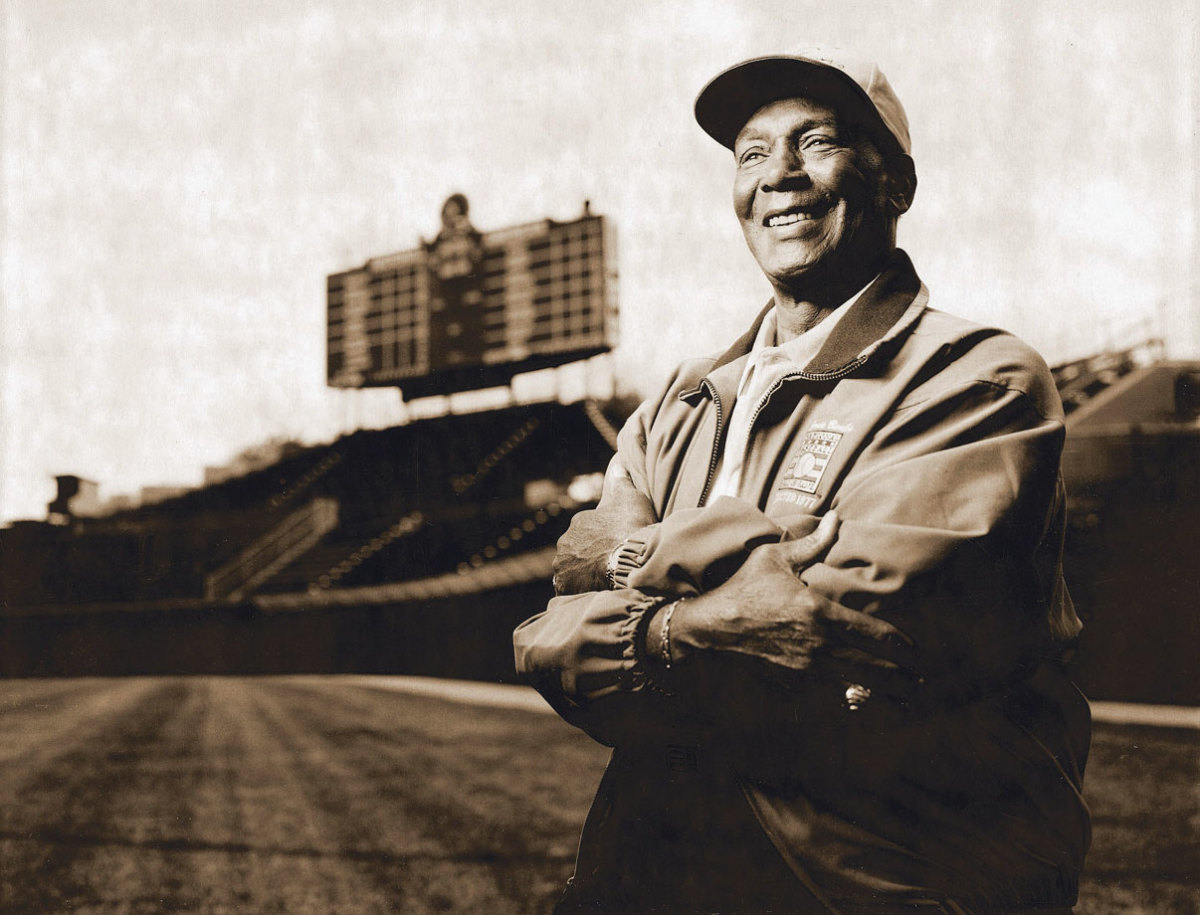
2004
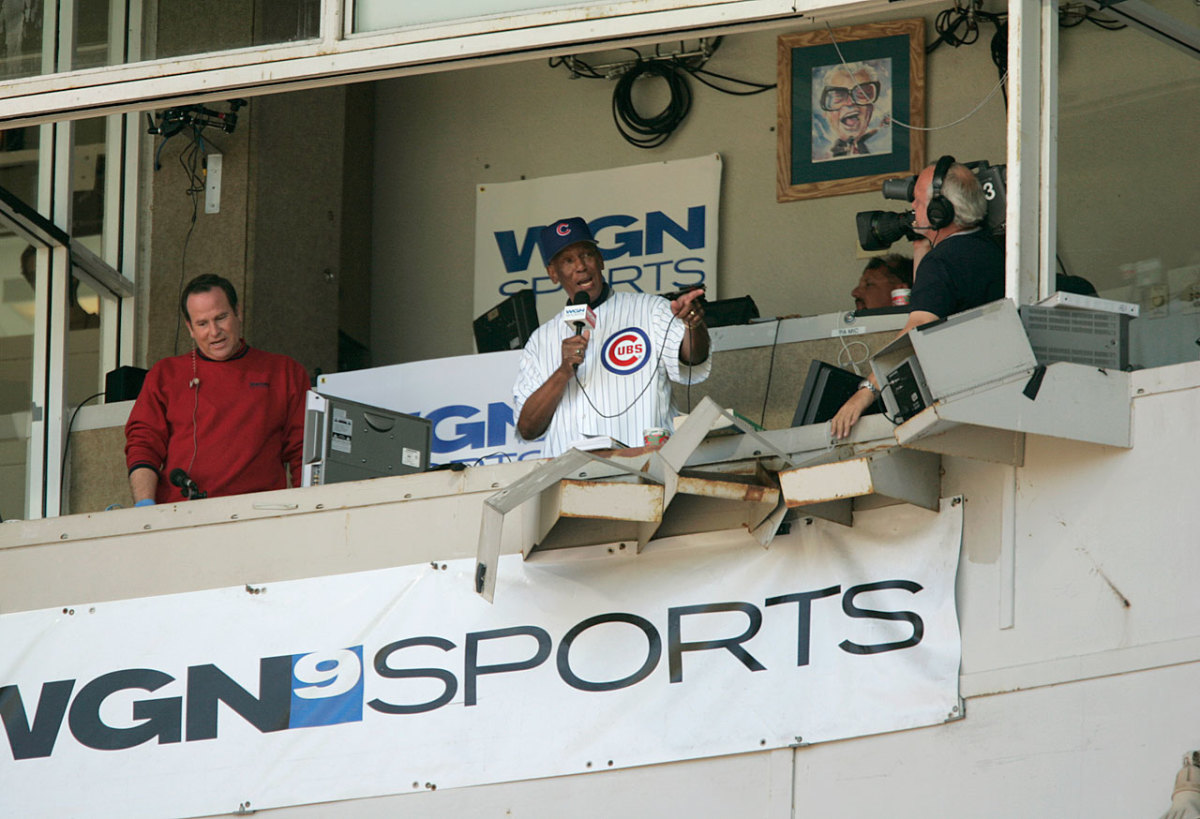
2007 NLDS
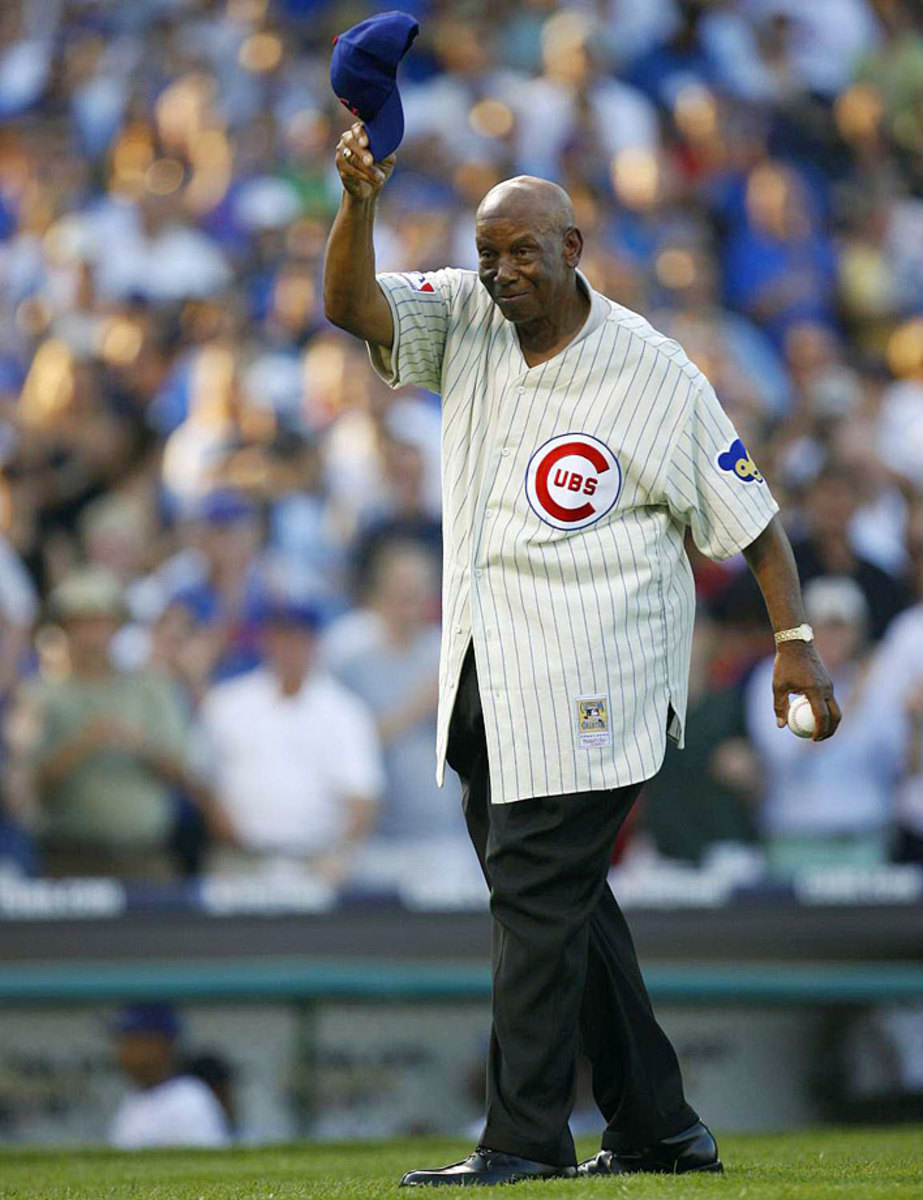
2014
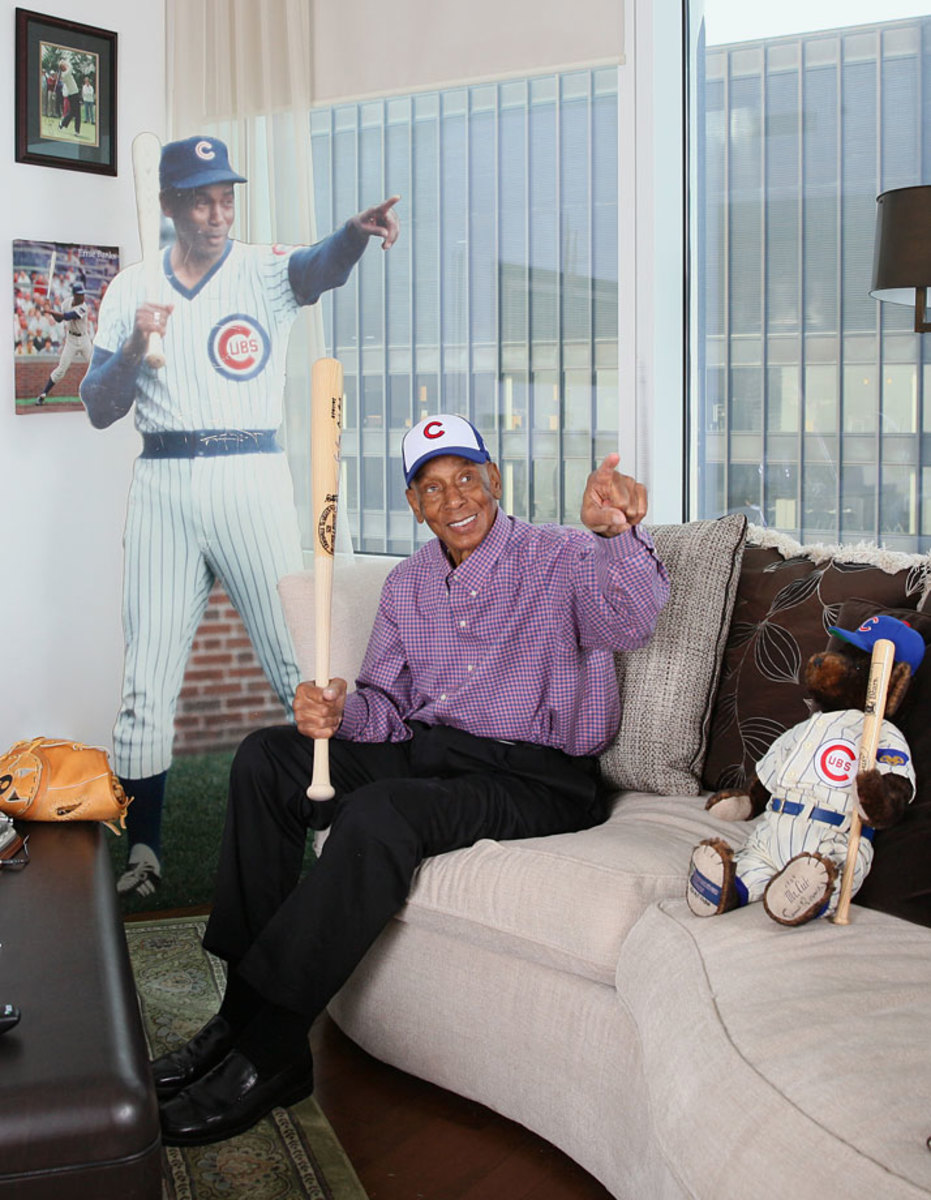
2014
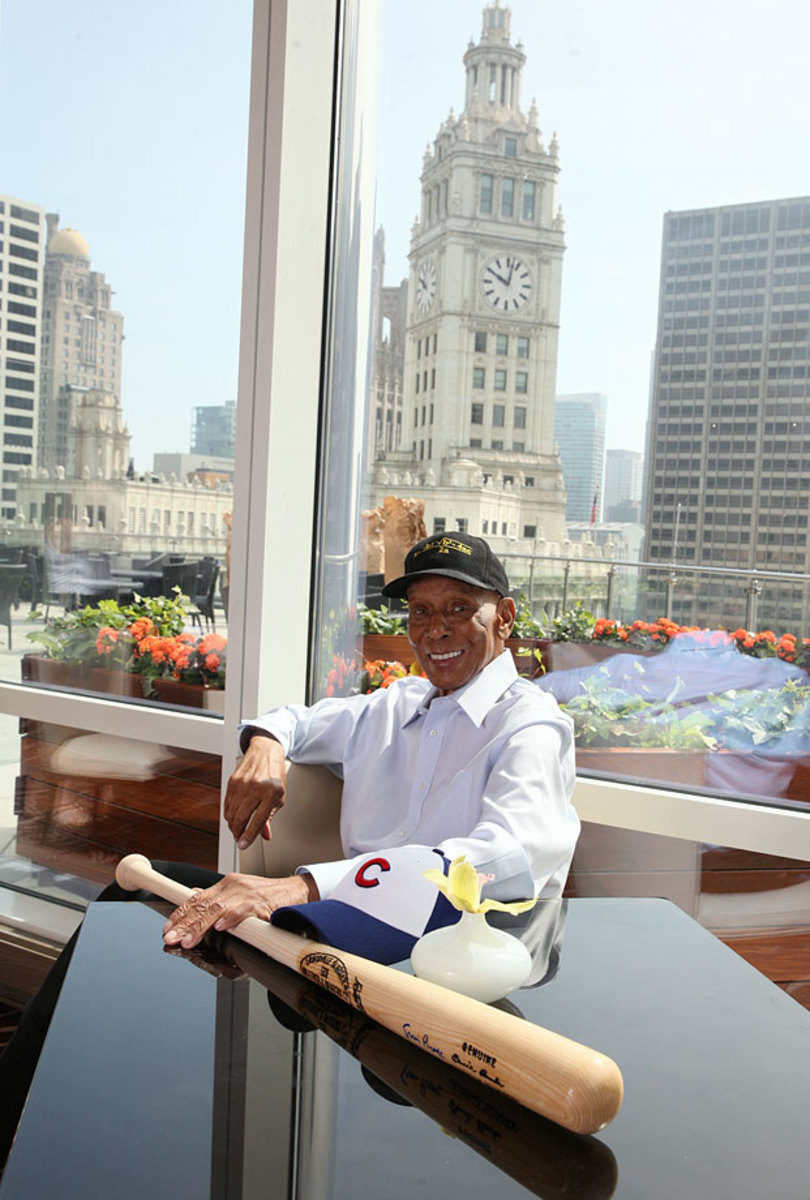
2014
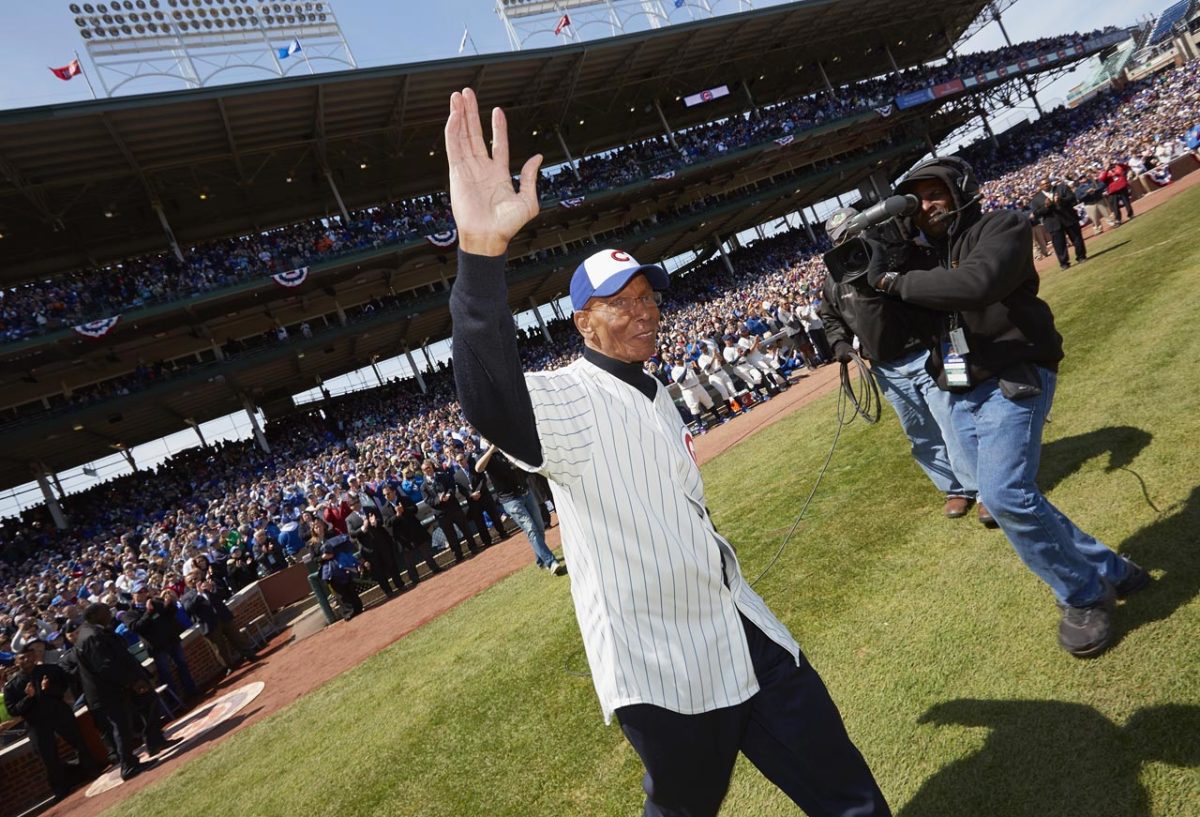
Ernie Banks Statue at Wrigley Field
